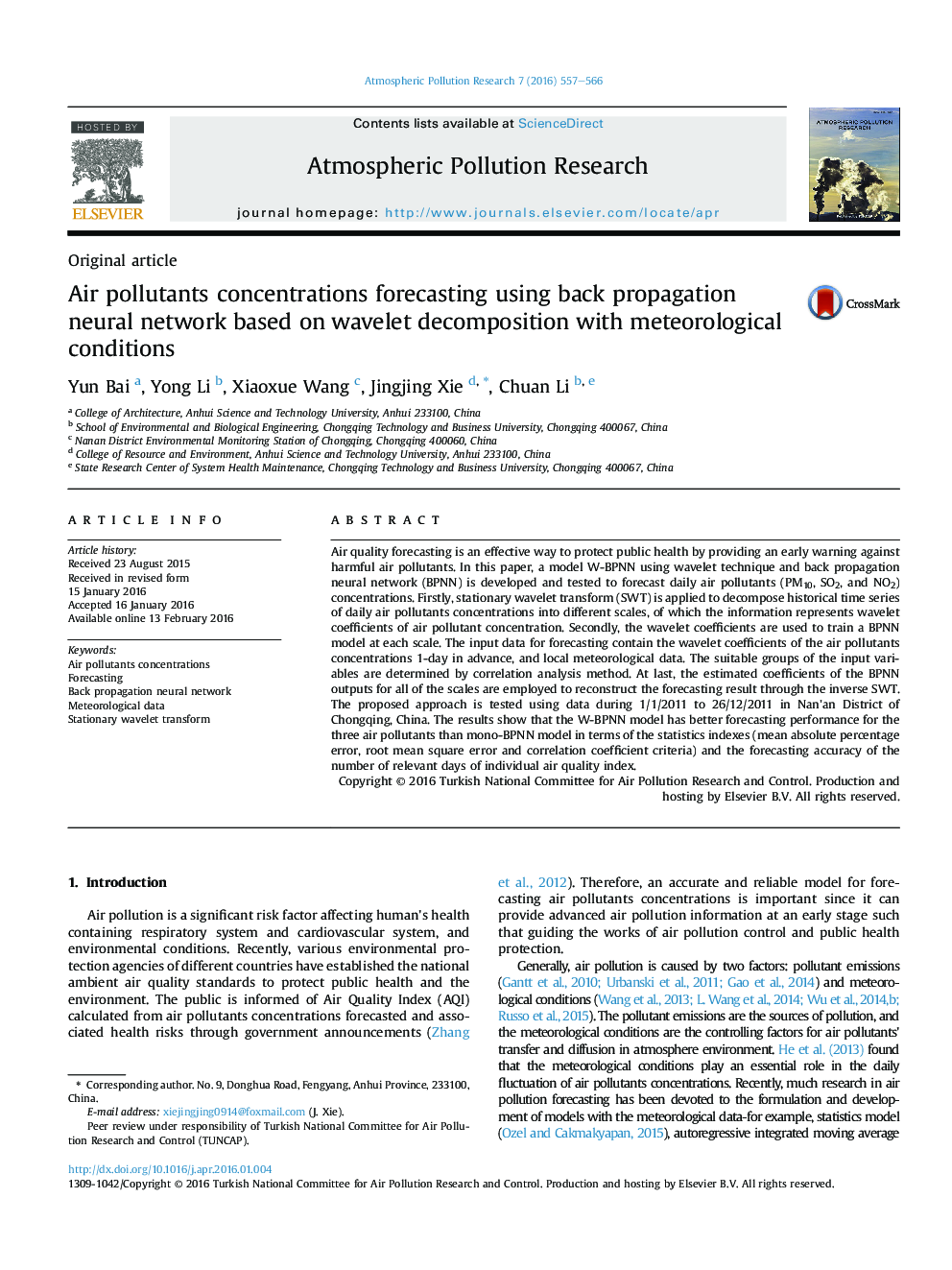| کد مقاله | کد نشریه | سال انتشار | مقاله انگلیسی | نسخه تمام متن |
|---|---|---|---|---|
| 4434536 | 1310514 | 2016 | 10 صفحه PDF | دانلود رایگان |
• A BPNN with wavelet transform model is proposed for forecasting air pollutants concentrations.
• Feature extraction and characterization of air pollutants are realized by wavelet transform.
• Meteorological factors also play a vitalrole in the daily variability of pollutants.
• This method can improve forecasting accuracy for daily air pollutants concentrations.
Air quality forecasting is an effective way to protect public health by providing an early warning against harmful air pollutants. In this paper, a model W-BPNN using wavelet technique and back propagation neural network (BPNN) is developed and tested to forecast daily air pollutants (PM10, SO2, and NO2) concentrations. Firstly, stationary wavelet transform (SWT) is applied to decompose historical time series of daily air pollutants concentrations into different scales, of which the information represents wavelet coefficients of air pollutant concentration. Secondly, the wavelet coefficients are used to train a BPNN model at each scale. The input data for forecasting contain the wavelet coefficients of the air pollutants concentrations 1-day in advance, and local meteorological data. The suitable groups of the input variables are determined by correlation analysis method. At last, the estimated coefficients of the BPNN outputs for all of the scales are employed to reconstruct the forecasting result through the inverse SWT. The proposed approach is tested using data during 1/1/2011 to 26/12/2011 in Nan'an District of Chongqing, China. The results show that the W-BPNN model has better forecasting performance for the three air pollutants than mono-BPNN model in terms of the statistics indexes (mean absolute percentage error, root mean square error and correlation coefficient criteria) and the forecasting accuracy of the number of relevant days of individual air quality index.
Journal: Atmospheric Pollution Research - Volume 7, Issue 3, May 2016, Pages 557–566
